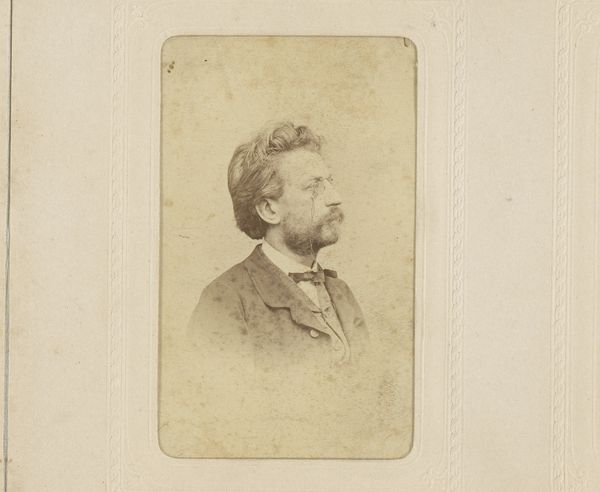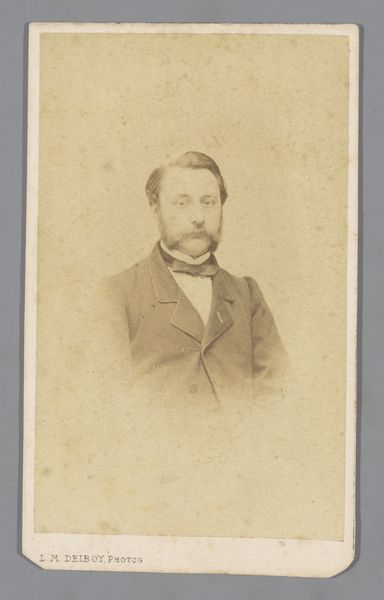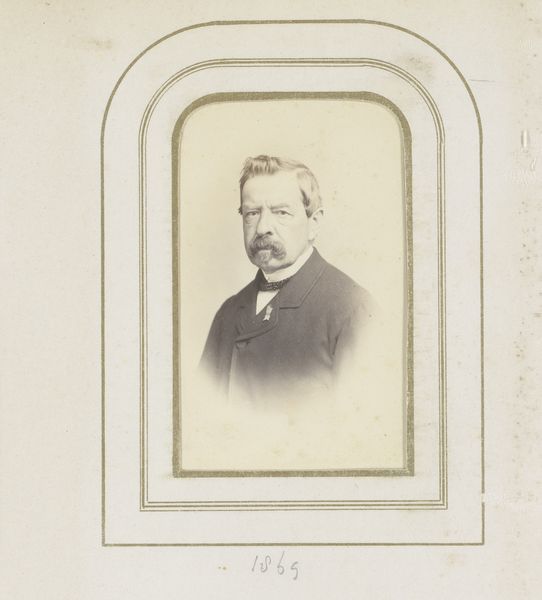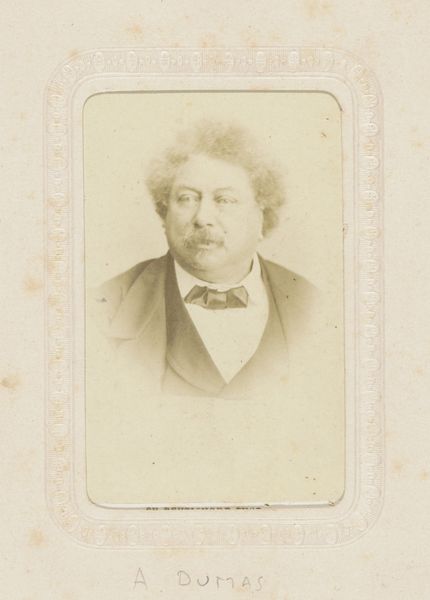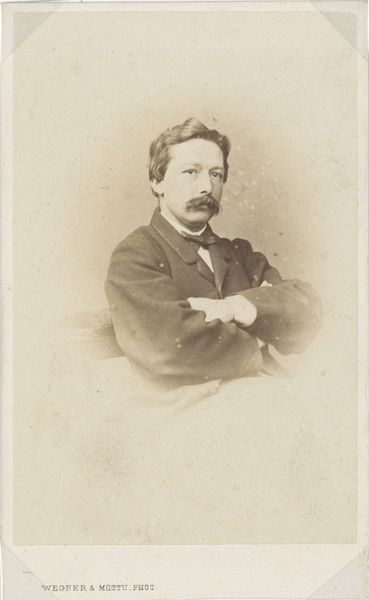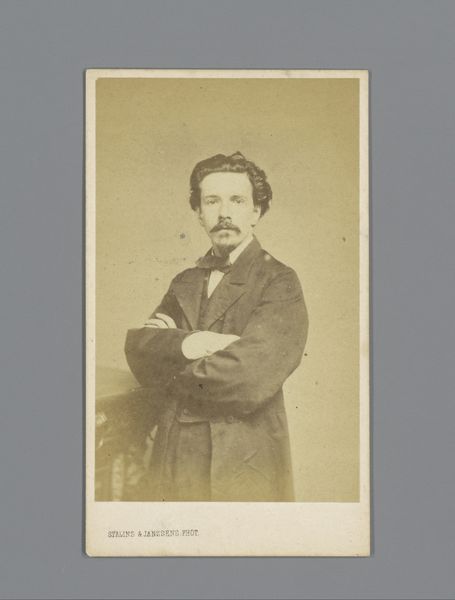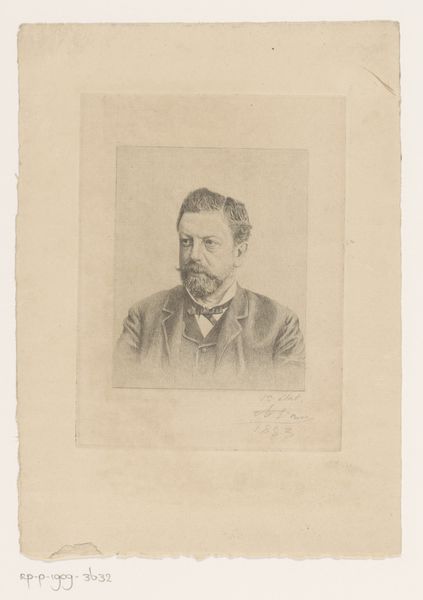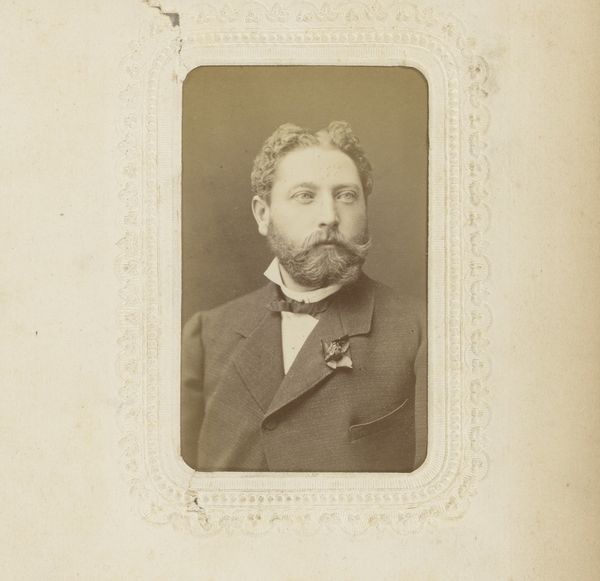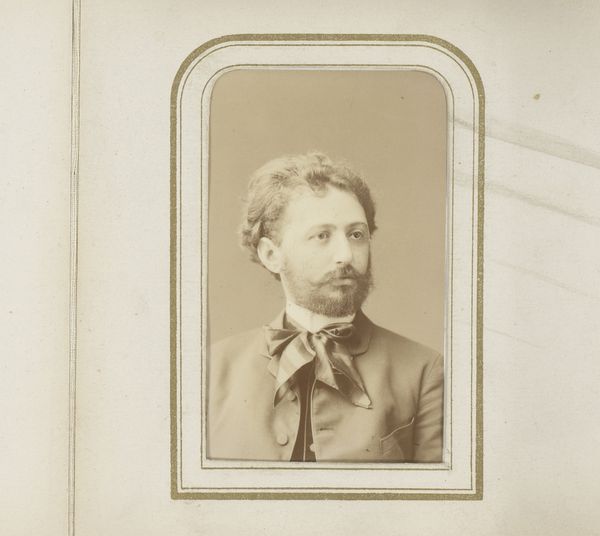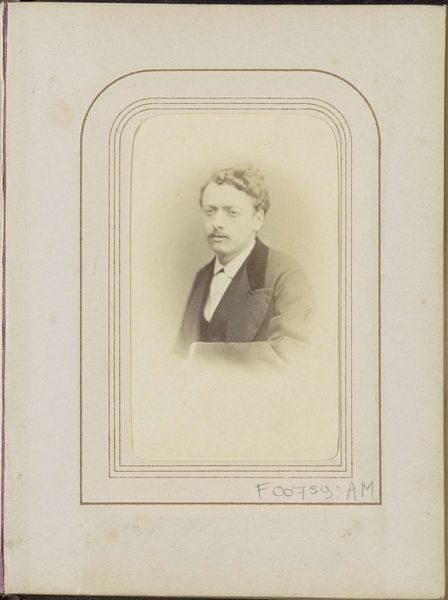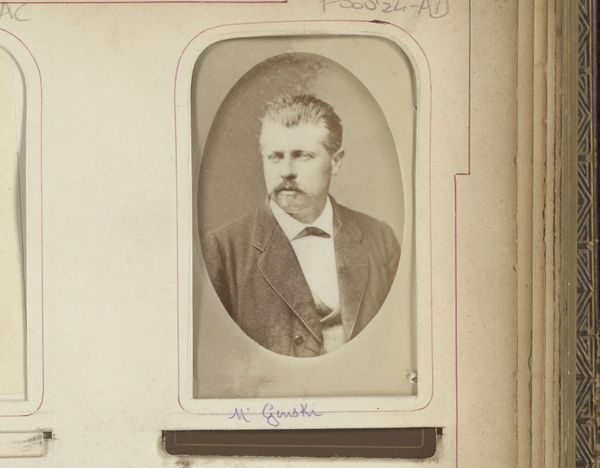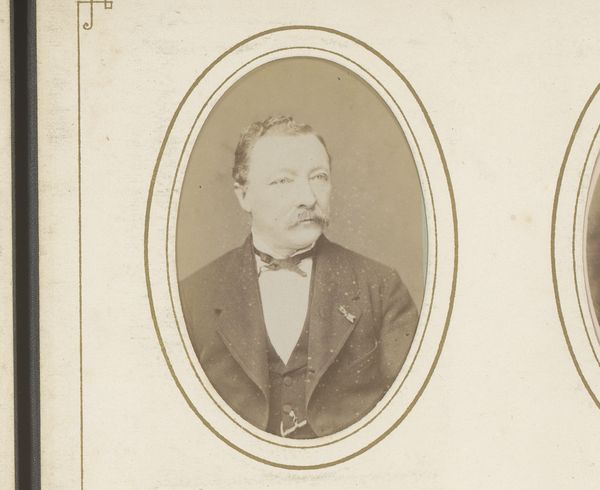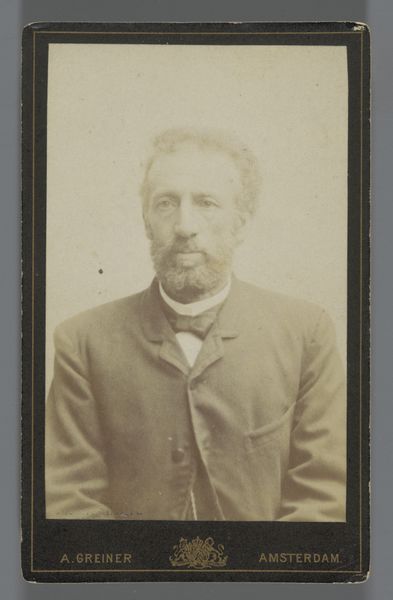
photography, albumen-print
#
portrait
#
photography
#
watercolor
#
albumen-print
#
realism
Dimensions: height 106 mm, width 68 mm
Copyright: Rijks Museum: Open Domain
Curator: Standing before us, we have an albumen print, a photograph titled "Portrait of an Unknown Man," created sometime between 1888 and 1894 by Heinrich Fuchs. Editor: He looks like he's seen some things. There's a weariness in those eyes, or maybe it's just the sepia tones playing tricks on me. It's the kind of photo you'd find tucked away in a dusty attic, holding secrets. Curator: The albumen process was quite common during this era, resulting in these warm, brown tones. This was also a time of immense social change; urbanization was burgeoning and traditional power structures were beginning to be interrogated. The "unknown" identity speaks to this—he could be anyone from a rising member of the bourgeoisie to someone struggling to maintain their position in society. Editor: Absolutely. It’s almost as if the photographer is trying to capture something essential about the individual, rather than just their physical likeness. He could be a merchant, a lawyer, or even a poet in disguise. And those whiskers, oh, they definitely have a story to tell. Curator: Indeed. Facial hair in the late 19th century often symbolized status and masculinity, but could also signify affiliation with specific artistic or political movements. The portrait's realism connects to a desire to document, categorize, and even "know" individuals through visual means, reflective of evolving scientific and social ideas prevalent then. Editor: The framing, the way he's slightly off-center... there's a sort of vulnerability to it. Or is that just me projecting? It makes you want to invent a narrative, imagine his life, his joys, and sorrows. Makes me wanna sketch him, this mysterious stranger. Curator: That vulnerability, I think, also stems from our distance from him. As viewers today, removed by time and lacking contextual clues, we grapple with assumptions and attempt to connect to an identity shrouded in the past, so that experience is bound up with power, politics, and even the art of representation itself. Editor: So, it’s less about the man and more about *us* trying to understand him, which, let’s be honest, we can't truly do. Curator: Exactly. By trying to understand him within our contemporary context, we reveal our current values, our contemporary selves. Editor: Well, for me, it's been a reminder of how photos are sometimes all we have left of someone—how precious they can be and that everyone has their own life narrative to unpack. Curator: A powerful reflection. These "Unknown" subjects in historical artworks invite us to contemplate broader historical power structures—and, perhaps, question what's truly “known” when viewing such work.
Comments
No comments
Be the first to comment and join the conversation on the ultimate creative platform.
